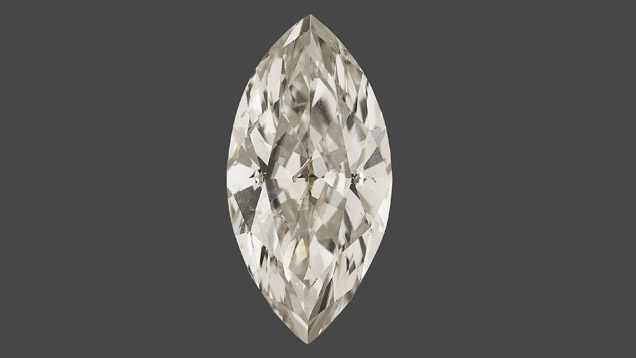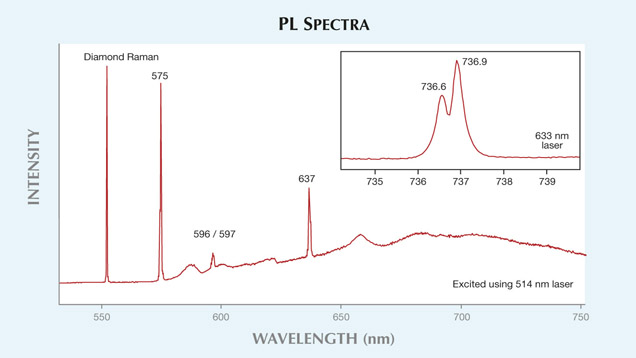Very Large CVD Synthetic Diamond
, , , andApril 30, 2013

This marquise, which measured 13.42 x 6.73 x 3.94 mm, was more than twice the size of a 1.05 ct pear shape examined in 2010, previously the largest CVD synthetic tested by GIA (see Summer 2010 G&G Lab Notes, pp. 143–144). It had J/K color with a brownish tint, and microscopic observation revealed small fractures, pinpoints, and non-diamond-carbon black inclusions, resulting in an SI2 clarity grade.
The mid-infrared absorption spectrum showed the features of type IIa diamond. It was very pure in the infrared region, with no nitrogen- or hydrogen-related absorption features. Photoluminescence analysis at liquid-nitrogen temperature with varying laser excitations displayed typical CVD features: very strong emissions from N-V centers, moderate emission lines at 736.6/736.9 nm from the [Si-V]- center, and the CVD-specific 596/597 nm pair (figure 2). Also detected was weak emission from the H3 defect with a zero-phonon line at 503.1 nm, making for an interesting combination of optical centers. Under the short-wave UV radiation of the DiamondView, the table and crown facets showed pure blue fluorescence while the pavilion displayed banded orange fluorescence with irregular blue fluorescence regions. Very strong internal stress with irregular patterns was confirmed under the microscope using cross-polarized light.

Figure 2. The 2.16 ct synthetic showed typical photoluminescence features of CVD growth, including strong emissions from N-V centers at 575 and 637 nm, moderate CVD-specific emissions at 596/597 nm, and 736.6 and 736.9 nm emissions from the [Si-V]– center.
Testing of this large, gem-quality CVD synthetic underscored the rapid improvement of lab-grown diamond technology. It is foreseeable that more of these products will continue to reach the jewelry industry.Read More Lab Notes.



